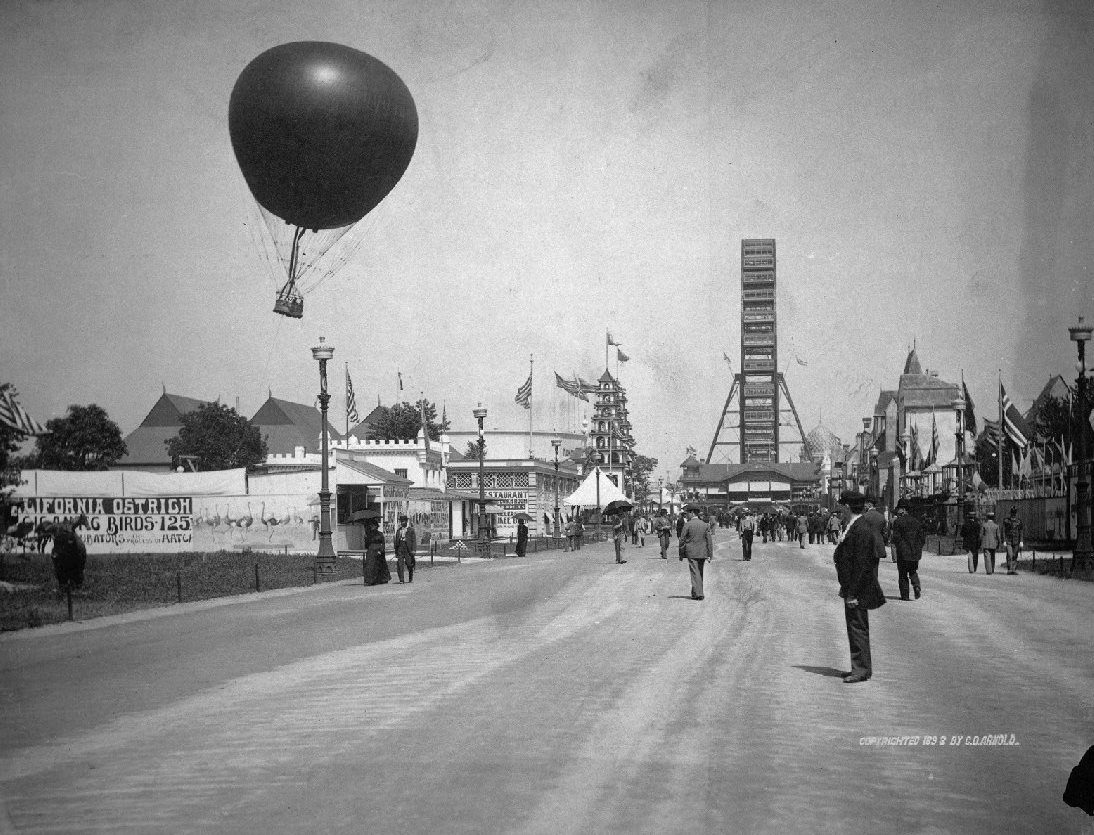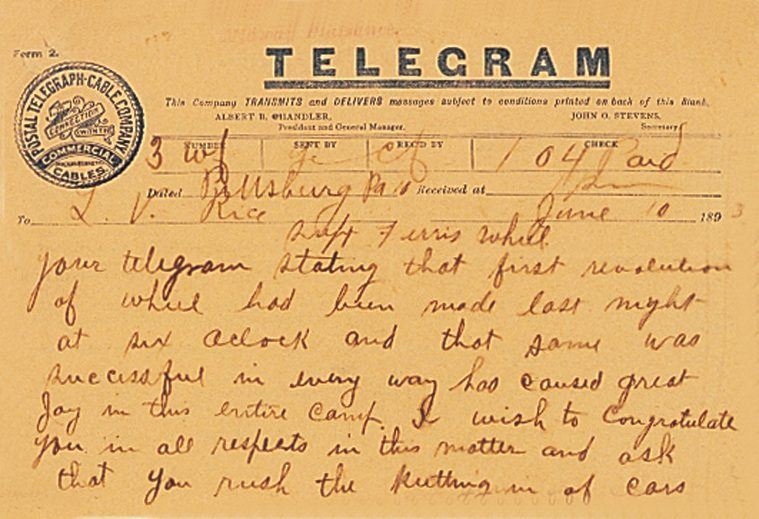PRIMARY SOURCE TYPE: 2D OBJECTS, PHOTOGRAPHS, DOCUMENTS
When the Ferris wheel was introduced it inspired awe and wonder. The world’s first Ferris wheel was invented for Chicago’s Columbian Exposition of 1893. Students will explore the creative inspiration behind the wheel, the collaborative process of fabricating the wheel, and the features of riding on the wheel. They will analyze primary source materials, including photographs, an advertising poster, and telegrams exchanged between George Ferris, the inventor of the wheel, and Luther Rice, the engineer supervising construction of the wheel. At the conclusion of this unit, students will appreciate the uniqueness of the Ferris wheel and the process and creativity necessary to generate an idea and then turn it into a physical reality.
 Lesson 1: Invent It!
Lesson 1: Invent It!
This lesson introduces students to George Ferris and his invention, the Ferris wheel. Students will closely analyze an advertisement for the wheel and apply a metric conversion to the ride’s statistics. Afterward, students will explore the inspiration behind the wheel–to invent an attraction that would rival the Eiffel Tower of Paris. They will think about inspiration in their everyday lives to invent their own new amusement ride and then “pitch” the merits of their ride to their classmates. Download Invent It!

Lesson 2: Ferris Wheel Fun: Talking with Telegrams!
This lesson explores the complex and collaborative process of building the world’s first Ferris wheel. Students will analyze the written communication between George Ferris and Luther Rice for detail, composing lists of the specific construction tasks involved and making inferences about the challenges of the process. Students will then take on the personas of Rice and Ferris to write and exchange their own sequence of telegrams and deliver their correspondence as oral reports. Finally, students will compare and contrast communication during the 1890s to that of today and begin to appreciate the impact communication had on building the wheel. Download Ferris Wheel Fun: Talking with Telegrams!